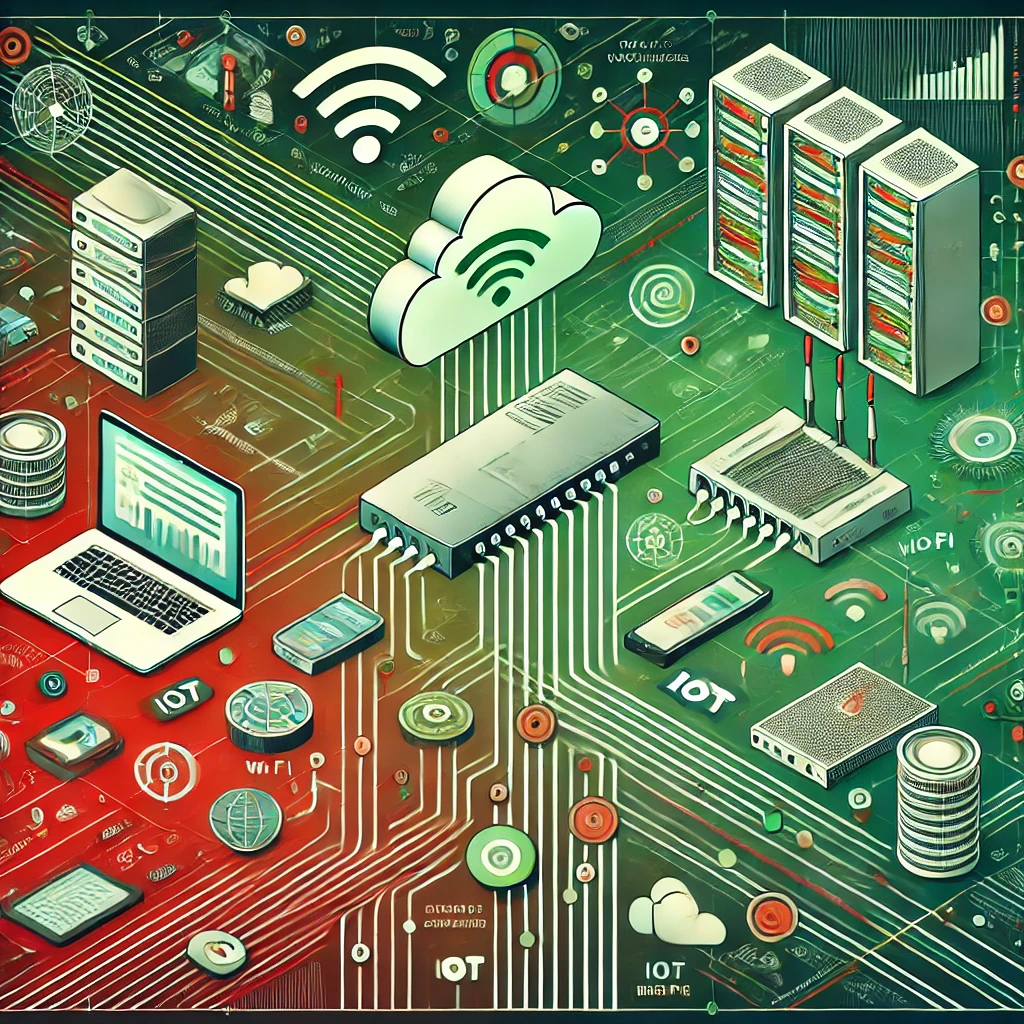What are the advantages of using IEEE 802.3 over IEEE 802.5 in enterprise networks

Categories:
3 minute read
When comparing IEEE 802.3 (Ethernet) and IEEE 802.5 (Token Ring), several advantages make IEEE 802.3 a more favorable choice for enterprise networks. Here are the key advantages of using IEEE 802.3 over IEEE 802.5:
1. Cost Efficiency
Lower Hardware Costs: Ethernet technology, governed by IEEE 802.3, has become the dominant networking standard, leading to mass production of Ethernet hardware. This results in lower costs for switches, routers, and network interface cards (NICs) compared to Token Ring equipment, which is less commonly produced and thus more expensive[1][2].
Affordable Cabling: The cabling used in Ethernet networks (e.g., twisted-pair cables) is generally cheaper and more widely available than the specialized cabling often required for Token Ring networks[1].
2. Scalability
Higher Data Rates: IEEE 802.3 supports a wide range of data rates, from 10 Mbps to over 400 Gbps in modern implementations. This scalability allows enterprises to upgrade their networks easily as their data needs grow[1][2].
Flexible Network Design: Ethernet can be implemented in various topologies (e.g., star, tree), making it adaptable to different organizational layouts and growth patterns without requiring significant redesigns[1][4].
3. Interoperability
Wide Compatibility: IEEE 802.3 ensures that devices from different manufacturers can work together seamlessly, which is crucial for enterprises that may use equipment from multiple vendors. This interoperability simplifies network expansion and integration of new technologies[1][2].
Standardization: As a widely adopted standard, Ethernet benefits from extensive testing and validation across many devices and applications, ensuring reliability in diverse environments[1].
4. Performance and Efficiency
Collision Management: While both standards manage data transmission differently, Ethernet’s CSMA/CD (Carrier Sense Multiple Access with Collision Detection) allows for efficient handling of collisions when they occur, albeit with some performance impact during high traffic loads. However, modern Ethernet switches operate in full-duplex mode, effectively eliminating collisions altogether[1][4].
Higher Throughput: With advancements like Gigabit Ethernet and beyond, Ethernet can handle higher throughput compared to Token Ring’s maximum speeds of 16 Mbps or even up to 100 Mbps with specialized configurations[2][4].
5. Simplicity of Implementation
Ease of Setup: Setting up an Ethernet network is generally simpler than a Token Ring network due to the straightforward nature of Ethernet’s architecture and the availability of user-friendly networking equipment[1][2].
Minimal Configuration Needs: Ethernet networks typically require less complex configuration compared to Token Ring setups, which involve managing token passing and ensuring that all devices are synchronized correctly within the logical ring structure[4].
6. Robustness and Reliability
Fault Tolerance: In an Ethernet network using a star topology, if one connection fails, it does not affect the entire network; only the device connected through that link is impacted. In contrast, Token Ring networks can suffer from performance issues if any device fails or if there are problems with the token-passing mechanism[1][2].
Easier Troubleshooting: The centralized nature of most Ethernet deployments allows for easier monitoring and troubleshooting of network issues compared to the more complex token-passing system used in Token Ring networks[4].
Conclusion
In summary, while both IEEE 802.3 (Ethernet) and IEEE 802.5 (Token Ring) have their merits, the advantages of using IEEE 802.3 in enterprise networks are compelling. Cost efficiency, scalability, interoperability, performance efficiency, simplicity of implementation, and robustness make Ethernet the preferred choice for modern networking needs. As organizations continue to evolve and expand their technological infrastructure, adopting IEEE 802.3 standards positions them well for future growth and innovation in networking capabilities.
Sources
[1] What Is IEEE 802.3? | FS Community https://community.fs.com/encyclopedia/ieee-8023.html [2] IEEE Standards - Dr. Balvinder Taneja https://drbtaneja.com/ieee-standards/ [3] [PDF] Overview of LANs Ethernet Token Ring https://wiki.eecs.yorku.ca/course_archive/2009-10/W/3213/_media/assignments:cse3213_16_lans_w2010.pdf [4] What is token ring and how does it work? - TechTarget https://www.techtarget.com/searchnetworking/definition/Token-Ring [5] What are the IEEE 802 wireless standards? - TechTarget https://www.techtarget.com/searchnetworking/reference/IEEE-802-Wireless-Standards-Fast-Reference
Feedback
Was this page helpful?
Glad to hear it! Please tell us how we can improve.
Sorry to hear that. Please tell us how we can improve.